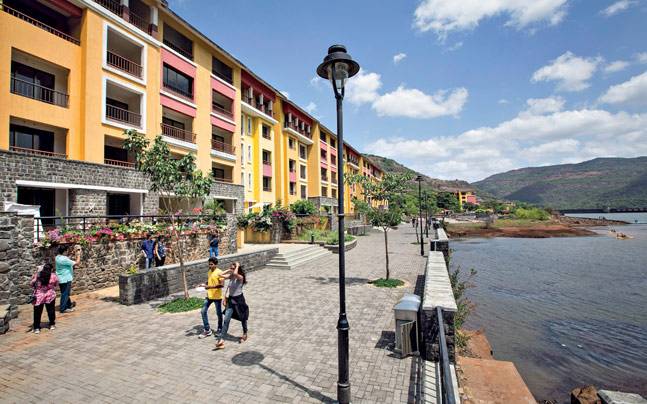It is often said that Western business models cannot be replicated in India because the country has its own socio-economic conditions which are drastically different from the countries in the West. The latest example of this being true is the Lavasa city project headed by Hindustan Construction Company (HCC). The Managing Director of HCC Ajit Gulabchand came up with an idea to build a hilltop city on the Western Ghats of Maharashtra, modeled after the cotton-candy harbor of Italy’s Portofino. The site chosen for the project was a hill station in the district of Pune, four hours away from the metropolis of Mumbai. The site was chosen on the basis of availability of land and proximity from Mumbai, the financial capital of the country.
It was expected to be India’s first privately built and managed city, with billions of dollars pumped in and its management being free from bureaucratic interference. One of the five towns, Dasve was planned for 30,000 to 50,000 people each, with the aim of soaking up settlers from towns and village looking for opportunities in urban areas. To make his dream project a concrete reality, Ajit Gulabchand hired the architects at HOK, creators of LaGuardia’s Airport Central Terminal B in New York and the Barclays world headquarters in London. Today, Dasve is an incomplete shell housing some 10,000 people where garbage collection is sporadic which makes litter soil the man-made lakes. Signs of neglect are everywhere, maintenance is non-existent and that’s for the construction already done; for the unfinished building work there is little happening. The plan for the other four towns is already abandoned.
Lavasa defaulted on dues payable to bondholders, and has delayed repayment to other creditors including banks so the creditors may go to RBI for initiating insolvency proceedings against the company. The Lavasa project may go bankrupt as early as the month of August, and this will be atypical of the fate of other large-scale infrastructure projects. Aamby Valley, developed by Sahara Group in the same district, and various housing projects of JP Infrastructure and Amrapali Group in Noida suffered a similar fate. The builder-politician nexus prevalent from the previous UPA era, coupled with the lack of in the real estate sector, is what is responsible for this mess. In the Lavasa project, Nationalist Congress Party President Sharad Pawar is alleged to be involved. A former IPS officer and practicing lawyer Yogesh Pratap Singh alleged that “the former Deputy Chief Minister of Maharashtra, Ajit Pawar, who was then Irrigation Minister, and Chairman of the Maharashtra Krishna Valley Development Corporation, had misused his official powers, awarding 348 acres (141 hectares) of land at throwaway prices to the Lake City Corporation which was renamed Lavasa Corporation, The land was awarded at a paltry monthly rent of Rs. 23,000, of which share of 20.81 per cent was held by Mr. Sharad Pawar’s daughter, Supriya Sule, and her husband Sadanand Sule.”
The previous UPA government did not bring any strong laws to regulate the real estate sector, because many of its leaders were directly or indirectly involved in big infrastructure projects. Billions of dollars of black money were being pumped into real estate to convert it to white money. The Modi government since coming to power took a series of reforms to end the lawlessness in infrastructure sector. The government brought The Real Estate (Regulation and Development) Act or RERA to regulate the real estate and then the demonetization to curb the black money investment in infrastructure projects. Now the government has decided to amend the IBC law to make homebuyers preferential lenders as per banks to protect their money invested on housing. The positive steps by the government will lead to regulated and transparent real estate development which will lead to cheaper housing in the country.
